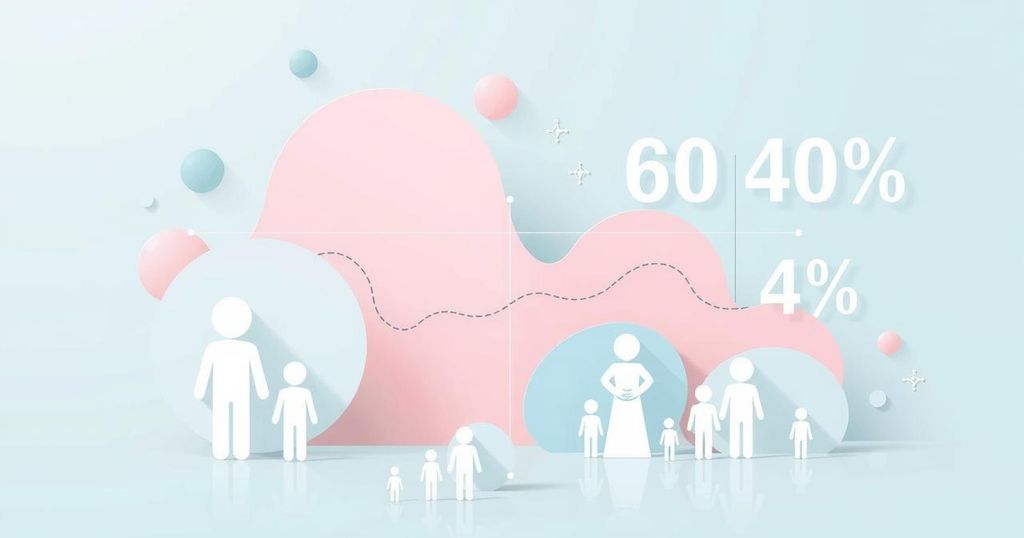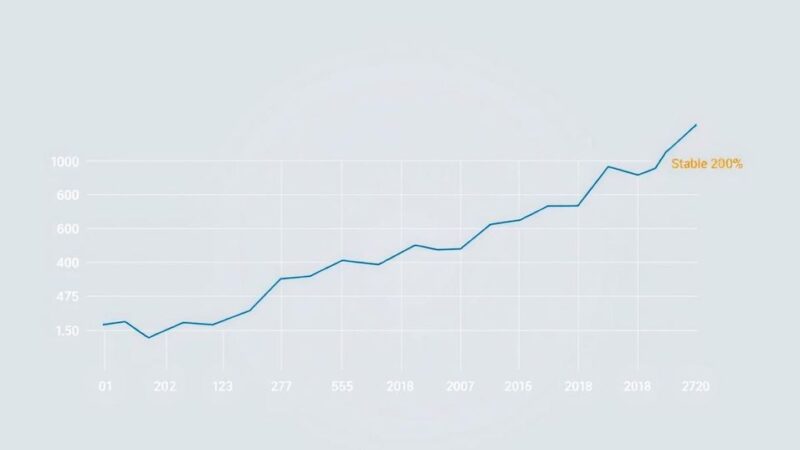Argentina’s birth rate has decreased nearly 40% in the last decade, hitting a historic low in 2023. The fertility rate is now at 1.4 children per woman, well below replacement levels. Demographic shifts are evident, with rising single-person households and late parenthood becoming the norm. The government’s stance on abortion and public health programs influences these trends. Experts suggest economic pressures play a critical role in couples’ decisions about having children.
Argentina is witnessing a troubling trend as its birth rate tumbles, down nearly 40% in just a decade. In 2023, the country reported its lowest birth figures in over half a century, according to data from the Ministry of Health. Specifically, there were 460,902 births this year—a 7% drop from last year and a staggering 41% drop from 2014 when births peaked at 777,012.
The crude birth rate now stands at 9.9 births per 1,000 people, a rate that’s beginning to mirror historic lows in some European countries. Furthermore, a recent report from Austral University shows that Argentina’s fertility rate has plummeted to 1.4 children per woman. This is significantly below the replacement rate needed to maintain the population, hinting at future population decline and an increasingly aging demographic if these trends persist.
Notably, there’s been a shift in household structures too. The percentage of households without children under 18 rose from 44% in 1991 to 57% in 2022. Single-person households jumped from 13% to 25% during the same period, while single-parent households—predominantly led by women—have also been on an upward trajectory.
President Javier Milei has voiced his worries regarding this declining birth rate, suggesting the upturn in abortion rates since its legalization in 2020 as a primary contributor. During his campaign, he hinted at plans to repeal the abortion law, even considering a referendum on the matter. However, so far, this issue hasn’t surfaced as a priority for his administration.
Conversely, Milei’s government has been reducing public health initiatives, including the distribution of contraceptives and sexual health services, delegating these duties to provincial authorities. Interestingly, while birth rates have declined, the number of legal abortions has soared from 73,000 in 2021 to over 107,000 in 2023, reflecting a strange juxtaposition in the current social climate.
Experts, however, warn against oversimplifying the causes of declining birth rates. They argue it stems from various socio-economic and cultural factors, such as rising inflation, job uncertainty, and the increasing cost of living. Many couples are thus postponing or opting out of having children altogether. It’s also worth mentioning that the average age of first-time parents has moved to 30-34 years, emphasizing a societal shift towards valuing education and career.
Research from the Buenos Aires consulting firm “Sentimientos Públicos” highlights that around 20% of people under 30 aren’t planning to have children, focusing on personal growth instead. Meanwhile, for millennials aged 30 to 44, that figure drops to 11%, with economic factors being a prominent consideration for 10% of them.
The demographic changes resulting from the prolonged decrease in birth and fertility rates raise serious concerns. For instance, the aging index of the Argentine population has jumped from 29 in 1991 to an expected 60.55 by 2025. Additionally, the number of people over 85 has doubled in just twenty years. These shifts could strain healthcare, education, and the pension systems, not to mention the broader economy going forward.
In summary, Argentina’s birth rate has dropped to unsettling lows, influenced by a mix of social, economic, and cultural factors. President Milei’s administration continues to navigate this complex landscape, highlighting a pressing need for policies that address these demographic changes. With fertility rates dropping and households changing—alongside increasing numbers of abortions—Argentina faces numerous challenges about its future population structure, which could fundamentally alter societal foundations and support systems.
Original Source: www.upi.com






